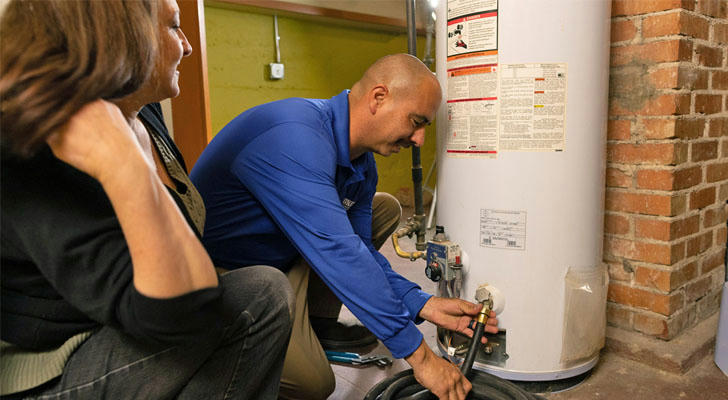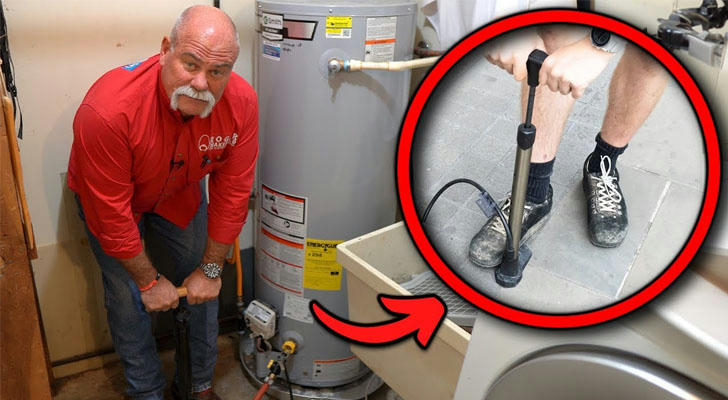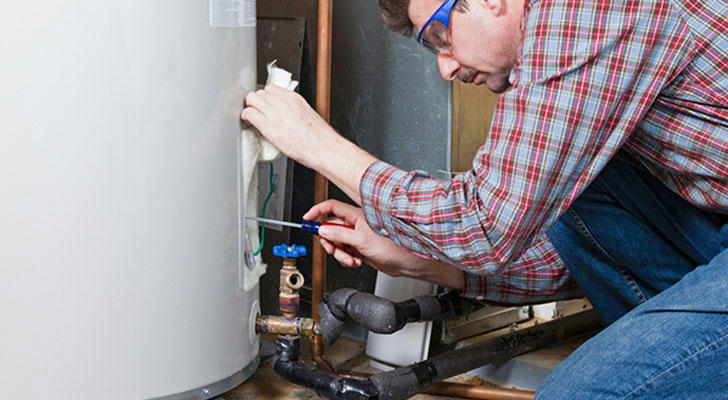How to Clean and Maintain Your Water Heater: Practical Tips for Extending Its Lifespan
Water heaters are essential appliances in modern households, providing hot water for daily activities like bathing, laundry, and cleaning. However, many people overlook regular maintenance and cleaning of their water heaters, leading to reduced performance or early breakdowns. This article will share practical tips for cleaning and maintaining your water heater, helping you extend its lifespan and ensure it runs efficiently for years to come.

Basic Structure and Working Principle of Water Heaters
Water heaters consist of several key components, including the heating element, storage tank, thermostat, and pressure valve. They work by heating water to provide hot water as needed, and there are different types of water heaters, such as electric water heaters, gas water heaters, and solar water heaters. Regardless of the type, the principle behind all water heaters is the same — heating water and maintaining a constant temperature to meet household needs.
The Importance of Cleaning and Maintaining Your Water Heater
Over time, water heaters accumulate mineral deposits, dirt, and debris, which can reduce heating efficiency and even lead to system malfunctions. Regular cleaning and maintenance help remove limescale buildup, ensure efficient heating, reduce energy consumption, and extend the lifespan of the appliance. Proper maintenance not only improves the performance of the water heater but also helps lower repair costs and prevent major breakdowns.

Practical Tips for Cleaning and Maintaining Your Water Heater
1.Regularly Flush the Tank to Remove Limescale Limescale is a result of mineral deposits from hard water and can build up inside the tank over time, especially in areas with hard water. This buildup can reduce the heating efficiency of the water heater and cause it to overheat, potentially damaging the heating element. Flushing the tank regularly is essential for preventing limescale buildup.
How to Flush the Tank:
• Turn off the power supply to the water heater (or the gas supply if it’s a gas heater).
• Close the inlet valve and open the drain valve to allow the water to flow out of the tank.
• Use a descaling agent or vinegar to help dissolve mineral deposits. Follow the manufacturer’s instructions for using cleaning products.
• If you have a gas water heater, regularly check the burner and heating elements for buildup as well.
2.Check the Thermostat and Pressure Valve The thermostat controls the temperature of the water, while the pressure valve ensures that the water pressure remains safe. If the thermostat malfunctions or the pressure valve becomes faulty, it can lead to overheating or excessive pressure in the tank, both of which can cause damage to the water heater.
How to Check the Thermostat and Pressure Valve:
• Check the thermostat setting annually to ensure the water is being heated to the desired temperature.
• Test the pressure valve by lifting the lever to release a small amount of water to ensure it is working properly.
• If either of these components is malfunctioning, it’s important to have them repaired or replaced by a professional.
3.Clean the Exterior of the Water Heater The exterior of the water heater should be cleaned regularly to maintain its appearance and prevent dirt buildup, which can affect its efficiency. Dust and dirt can interfere with the appliance’s ventilation, potentially causing overheating or other issues.
How to Clean the Exterior:
• Use a damp cloth to wipe down the exterior of the water heater. Avoid using harsh cleaning chemicals or abrasive tools that could damage the surface.
• Regularly check the area around the water heater to ensure proper airflow. Make sure there are no obstructions or accumulated dust around the heater’s vents.
4.Inspect the Electrical and Plumbing Connections It’s important to regularly check the electrical and plumbing connections of your water heater to ensure they are secure and in good condition. Loose or worn connections can cause electrical problems or leaks, both of which could damage the appliance.
How to Inspect Connections:
• Ensure the power supply is secure and check the wires for any signs of wear or damage.
• Inspect the water inlet and outlet pipes for leaks or corrosion. Tighten any loose connections and replace any damaged pipes to prevent leaks.
5.Ensure Proper Placement of the Water Heater The location of your water heater affects its performance and longevity. Make sure the heater is placed in a well-ventilated area, away from excess moisture. A damp or cramped space can cause damage to the appliance over time, leading to premature wear and tear.
6.Schedule Professional Maintenance Even with regular cleaning, it’s advisable to have a professional technician inspect and service your water heater at least once a year. A professional will be able to perform a thorough check-up, identify any potential problems, and carry out necessary repairs to keep your water heater running efficiently.

How to Spot Early Signs of Water Heater Issues
1.Decreased Heating Efficiency If your water heater is taking longer to heat water or isn’t heating the water to the desired temperature, it may be due to a buildup of limescale, a malfunctioning thermostat, or a damaged heating element. Perform maintenance on the heater and clean out any mineral deposits.
2.Leaks Around the Heater If you notice water pooling around the base of your water heater, there may be a leak. Check the plumbing connections and the tank for any signs of damage. Leaking water can cause significant damage to both the heater and the surrounding area, so it should be addressed immediately.
3.Strange Noises If your water heater is making unusual noises, such as popping or banging sounds, it could be a sign of sediment buildup in the tank. Flushing the tank and cleaning the elements should resolve the issue. If the noise persists, consider contacting a professional to inspect the heater.
4.Inconsistent Water Temperature If the water temperature fluctuates or becomes erratic, it could indicate a faulty thermostat or other internal component. Check the thermostat setting and ensure it is working properly. If the problem continues, it may require professional repair.
Conclusion
Regular cleaning and maintenance of your water heater are essential for extending its lifespan, improving its efficiency, and preventing unexpected breakdowns. By flushing the tank, inspecting the thermostat and pressure valve, cleaning the exterior, checking plumbing connections, and scheduling professional maintenance, you can ensure that your water heater runs efficiently for years to come. Paying attention to early signs of wear and tear can also help you avoid costly repairs. With proper care, your water heater will continue to provide reliable, hot water for your home.
